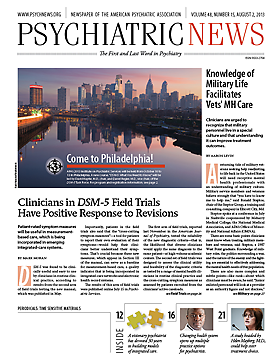During the past decade, several studies have shown that if patients can press a button to control the amount of pain medication they receive, they experience better pain control than if they do not have this option.
These findings gave Linda Chlan, Ph.D., a professor of symptom management research at Ohio State University College of Nursing, and her colleagues an idea. If intensive care unit (ICU) patients could press a button to play relaxing music whenever they felt anxious, would it reduce their anxiety and need for sedating medications?
Chlan and her colleagues report promising results from their study in the June 12 JAMA.
The study included some 400 critically ill patients being mechanically ventilated for acute respiratory failure in 12 ICUs in five hospitals. The subjects were randomized to one of three groups. Subjects in the first group received care as usual. Subjects in the second group were encouraged to use noise-reducing headphones whenever they wanted to block out ICU noise or have some quiet time. And subjects in the third group were encouraged to listen to relaxing music via headphones whenever they felt anxious or they simply felt like it. The subjects participated in the study for up to 30 days as long as they were receiving ventilator support. The average length of participation was six days.
Both at the start of the study and throughout it, the subjects were evaluated for anxiety with the VAS-A (Visual Analog Scale-Anxiety). “The VAS-A is a single-item scale used in this study to assess reduced response burden in nonvocal critically ill patients,” Chlan told Psychiatric News. “This instrument was chosen as the mechanically ventilated could easily [rate] their current level of anxiety when the instrument was presented vertically and conceptualized as a thermometer, from ‘none’ [at the bottom of the thermometer] to the ‘most anxious ever’ at the top of the thermometer.”
Also at the start of and throughout the study, subjects were evaluated for their use of eight sedatives or pain medications commonly used in the ICU—midazolam, lorazepam, propofol, dexmedetomidine, morphine, fentanyl, hydromorphone, and haloperidol. Even though the pain medications are not pharmacologically classified as sedatives, they can induce sedation, Chlan explained—hence their being included in the sedative-medication evaluation.
The subjects with access to music were monitored for how often they used it, and those with access to noise-abating headphones were monitored for how often they used them. Subjects in the music group listened to music for an average of 80 minutes a day. Subjects in the headphone group used headphones for an average of 34 minutes a day.
Anxiety Levels Significantly Lower
At any time point, subjects in the music group had anxiety scores that were 20 points lower than those for subjects in the usual-care group—a highly significant difference. By the fifth study day, anxiety was reduced 37 percent in the music group. Moreover, the music group used sedative medications significantly less often than the usual-care group did; they also used significantly lower doses of sedative medications than the usual-care group. By the fifth day, music subjects were using sedative medications 38 percent less often than at the start of the study; they were likewise using 36 percent lower dosages of sedative medications than at the start of the study.
As far as wearing headphones was concerned, it reduced anxiety as much as listening to music did, and it also reduced the amount of sedatives used as much as listening to music did. However, those who wore headphones needed to use sedatives more often than those listening to music.
Intervention Looks Promising
Thus music looks quite promising as a means of reducing anxiety and sedative medication exposure in ICU patients, Chlan and her team believe. It is also an inexpensive and easily implemented tool, they noted.
In an accompanying editorial, Elie Azoulay, M.D., Ph.D., an intensive care expert at Saint Louis Hospital in Paris, France, and colleagues agreed. This study “provides preliminary data that create new possibilities for improving the well-being of ICU patients,” they said.
The challenge now, Azoulay and colleagues contended, will be to attempt to repeat the results in a larger clinical trial in which anxiety is measured with a validated instrument, more deeply sedated as well as less-sedated patients are included, the physicians making decisions about patient sedation are masked to the intervention, and longer-term outcomes regarding depression, posttraumatic stress disorder symptoms, and quality of life are measured.
“Plans are under way for our next investigation, but it will not necessarily follow the exact protocol suggested in the editorial,” said Chlan.
The study was funded by the National Institutes of Health and National Institute of Nursing Research. ■

